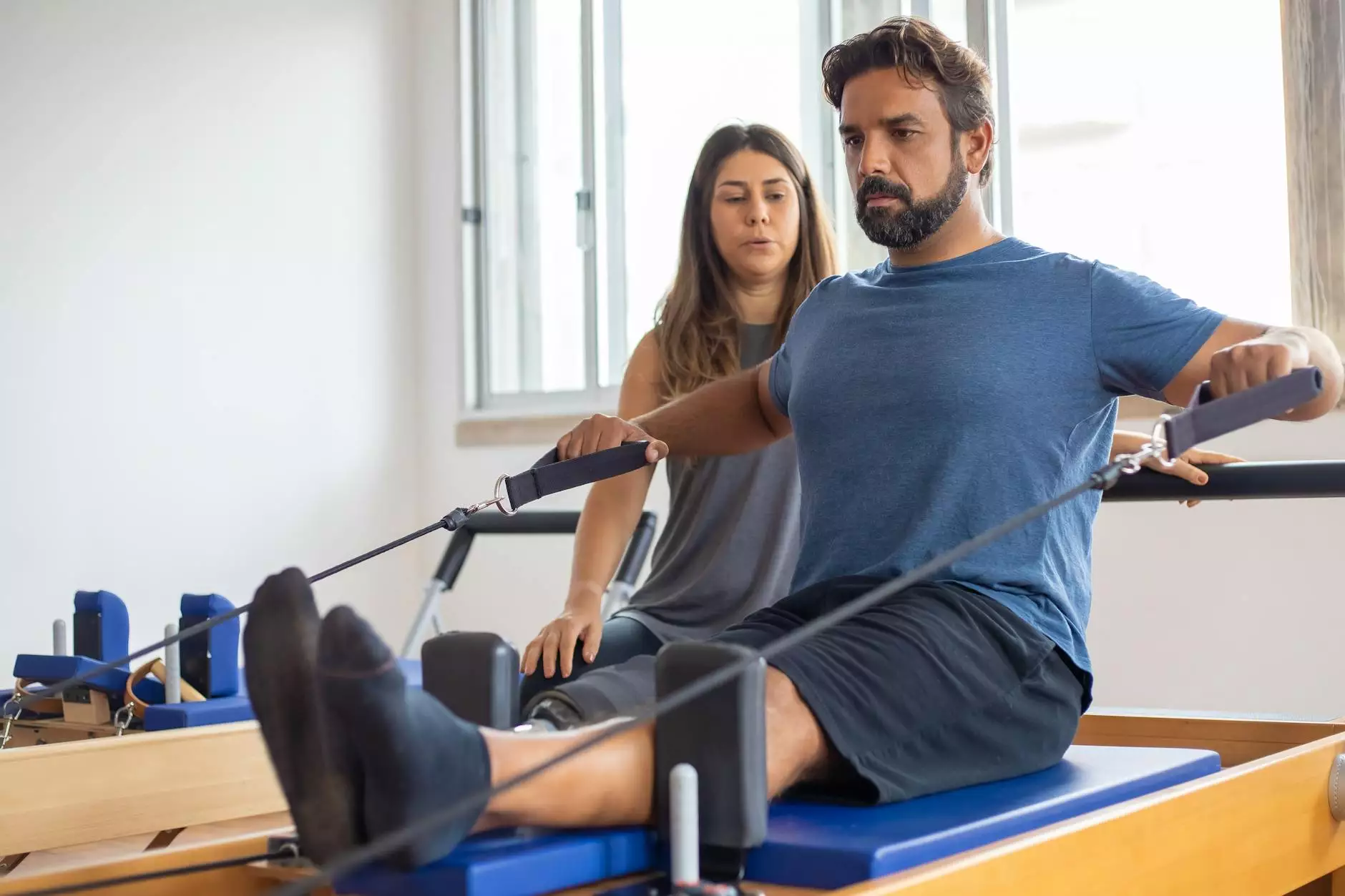Shoulder Pain with Internal Rotation - Understanding the Causes and Treatments

Shoulder pain with internal rotation is a common issue that affects many individuals, causing discomfort and limiting their range of motion. If you are experiencing such pain, it is crucial to understand the underlying causes and explore effective treatments. In this comprehensive guide, we will delve into the topic and provide valuable insights on how to alleviate the symptoms associated with shoulder pain with internal rotation.
The Anatomy of the Shoulder
Before we delve into the specific details of shoulder pain with internal rotation, let's first gain a basic understanding of the shoulder's anatomy. The shoulder is a highly complex joint formed by the connection of three bones: the humerus (upper arm bone), scapula (shoulder blade), and clavicle (collarbone).
The movements of the shoulder joint are made possible by a group of muscles known as the rotator cuff. These muscles play a crucial role in stabilizing and facilitating various arm movements, including internal and external rotation.
Causes of Shoulder Pain with Internal Rotation
Shoulder pain with internal rotation can stem from various factors, including overuse, trauma, inflammation, or underlying medical conditions. Understanding the specific causes of your pain is essential to develop an appropriate treatment plan. Here are a few common causes:
1. Rotator Cuff Injury
Injury or strain to the rotator cuff muscles can result in shoulder pain, especially during internal rotation. These injuries often occur due to repetitive motions or sudden trauma to the shoulder, such as lifting heavy objects or participating in sports. Activities like throwing a baseball or swimming can also contribute to rotator cuff injuries.
2. Impingement Syndrome
Impingement occurs when the tendons of the rotator cuff become compressed or irritated as they pass through the subacromial space (between the acromion and humerus). This can lead to inflammation, pain, and restricted internal rotation of the shoulder joint.
3. Shoulder Instability
Shoulder instability happens when the structures that hold the shoulder joint in place become compromised. This instability can cause the humerus to move excessively within the joint, resulting in pain and limited internal rotation.
4. Frozen Shoulder (Adhesive Capsulitis)
Frozen shoulder is a condition characterized by the thickening and tightening of the shoulder joint's capsule. Individuals with frozen shoulder experience pain, stiffness, and reduced mobility, including difficulty with internal rotation.
Treatments for Shoulder Pain with Internal Rotation
When it comes to treating shoulder pain with internal rotation, it is crucial to consult with healthcare professionals who specialize in musculoskeletal conditions. Chiropractors and physical therapists are highly skilled in diagnosing and developing personalized treatment plans to address the root causes of your pain. Here are some effective options they may recommend:
1. Chiropractic Adjustments
Chiropractors use manual techniques, including adjustments and manipulations, to realign the spine and joints. These adjustments can help alleviate pain, improve joint mobility, and restore proper function to the shoulder, including internal rotation.
2. Physical Therapy
Physical therapy plays a crucial role in managing shoulder pain by improving strength, flexibility, and range of motion. A physical therapist will create a tailored exercise program that includes stretching and strengthening exercises, targeting the specific muscles and structures involved in internal rotation.
3. Anti-Inflammatory Medications
If inflammation is a significant contributing factor to your shoulder pain, your healthcare provider may recommend anti-inflammatory medications. These medications help reduce inflammation, swelling, and pain, providing temporary relief while other treatment modalities take effect.
4. Rest and Ice
Resting the affected shoulder and applying ice packs can help reduce pain and inflammation. Ice therapy can be particularly beneficial after engaging in activities that exacerbate internal rotation pain.
5. Surgical Intervention
In severe cases where conservative treatments fail to provide relief, surgical intervention may be necessary. This is typically a last resort and is only recommended when there is significant damage or persistent symptoms that do not respond to other treatments.
Preventing Shoulder Pain with Internal Rotation
Prevention is always better than cure. While it may not always be possible to avoid shoulder injuries or conditions, certain precautions can significantly reduce the risk. Here are some tips to help prevent shoulder pain with internal rotation:
- Practice proper posture and body mechanics, especially during activities involving repetitive shoulder movements.
- Engage in regular stretching and strengthening exercises to maintain shoulder joint flexibility and strength.
- Avoid overexertion and excessive strain on the shoulder joint.
- Take breaks and rest when engaging in activities that put stress on the shoulder.
- Gradually increase the intensity and duration of physical activities to avoid sudden excessive stress on the shoulder.
Conclusion
Shoulder pain with internal rotation can be debilitating, affecting both your daily activities and overall quality of life. By understanding the causes, symptoms, and effective treatments, you can take the necessary steps to address the issue and find relief. Remember to consult with qualified healthcare professionals such as chiropractors and physical therapists for personalized guidance and treatment.
At IAOM-US, we specialize in providing comprehensive healthcare solutions for various musculoskeletal conditions. Contact us today to schedule an appointment and let our dedicated team help you overcome shoulder pain with internal rotation.








